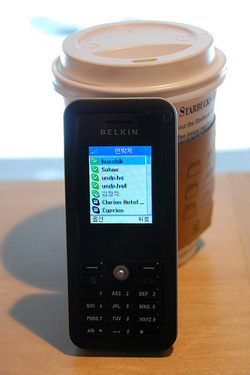The History of Cheap Calls and VoIP
In less than two decades, Voice over Internet Protocol (VoIP) has revolutionised the telecommunications industry. While mobile phones have made the headlines as they gradually evolved from expensive bricks to pocket supercomputers, in the background VoIP has helped to knock down barriers in international communication, providing a genuine alternative to telephone calls made using traditional telecoms infrastructure and providing near-universal access to cheap calls for anyone with a computer and an internet connection.
Early Days
The first recognisable VoIP software was launched back in the early days of the modern internet in 1995. Though primitive by today’s standards, VocalTec’s ‘Internet Phone’ service was revolutionary for its time. A hit among early adopters, Internet Phone’s success encouraged networking hardware providers such as Cisco and Lucent to develop their own corporate VoIP products, designed to replace outdated business telephony solutions. Domestic users, unfortunately, were hampered by the technological limitations of the time and slow connection speeds and poor quality audio codecs needed to be overcome before VoIP could make the jump to the mainstream.
The Broadband Revolution
The arrival of affordable broadband internet connections in most western cities by the early 2000s was crucial to the proliferation of VoIP and internet telephony services. For the first time, users had sufficient bandwidth to use higher quality codecs that approached the fidelity of normal telephone calls and could run VoIP services concurrently with browsers, instant messenger programs and even games without their internet connections grinding to a halt. The release of newer versions of Microsoft Windows and Mac OS helped to overcome early hardware and compatibility headaches, with plug-and-play headsets taking much of the hassle out of online voice chat. The stage was set for a revolution; all that was needed was the right software to bring VoIP to the masses.
Enter Skype
Skype first came to the public’s attention with the launch of beta software in August 2003 and quickly established itself as the de facto standard for internet voice communications. The Skype application allowed users to make computer-to-computer calls for free and also included a rudimentary instant messenger program to allow text communication. The company rapidly rolled out new services that allowed users to call landlines and mobile phones from Skype at greatly reduced costs and by the end of 2005 had integrated video chat into its software. With the fundamentals in place, Skype was firmly established as the market leader for cheap calls online and its service was seen as a benchmark for other operators.
The Future of VoIP
The success of Skype spawned a host of competitors, some of whom made aggressive inroads into the traditional telecoms market. The advent of ‘Skype Phones’ and residential VoIP plans offered by companies like Vonage threaten to render copper wire services obsolete. Many large corporations have already moved over to VoIP for business telephony, while a new wave of smartphone VoIP applications could undermine even mobile telephone calls. As internet connections continue to improve, VoIP seems set to further encroach on traditional phone services and may yet establish itself as the telecommunications standard for the 21st century.


